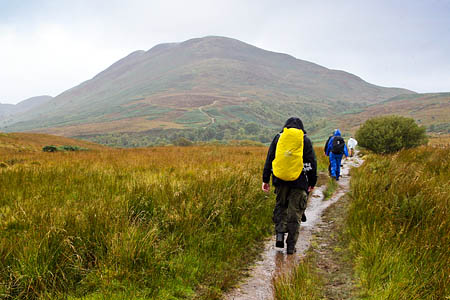Extreme weather which is becoming more common with climate change will put a strain on Scotland’s footpath network, a Government body said.
A Scottish Natural Heritage report said footpath authorities and managers will have to adapt maintenance to cope with torrential rain, changes in snow cover, sea level changes and freezing and thawing which will all have an effect on the network.
The Scottish Government’s advisory body on the outdoors said storm surges are increasingly likely to wash over or even wash out bridges; saturated ground could slump on to paths or result in landslides; and temperature rises may lead to increased undergrowth on lowland paths.
Challenges in the planning, design, construction and maintenance of paths need to be addressed, the SNH said.
The SNH report said properly designed paths constructed to best practice standards and adapted to local conditions, with a regular maintenance programme, are best suited to withstanding pressures associated with predicted changes to climate.
Installing additional or larger drains; changing the surface type when paths need repair or re-aligning paths on to higher ground through the planning process may be necessary, it added.
Caroline Fyfe, SNH recreation and access officer, said: “Scotland’s paths network are an important asset in providing the benefits of improved health and wellbeing for the nation and it is clear that more time and effort will have to be invested if they are to continue that pivotal role over the coming decades.
“The weather has a large part to play in influencing the condition of our paths, but key to ensuring that paths and path networks are resilient to the predicted chronic impacts of climate change is making sure that they are properly planned, constructed and maintained.
“The paths industry should try to ensure best practice techniques are used in construction and particularly that there is an adequate level of ongoing path inspection and maintenance. Climate change makes this even more important than before.
“While it is difficult to definitely point to changes in the condition of paths as climate change-related, and therefore count the costs of repair and maintenance schemes, we need to start preparing for the potential consequences.
“This report allows all those involved in funding, building and maintaining our paths network in Scotland to embark on the processes needed to ensure that our paths continue to contribute to the health and wellbeing of our nation.”

John Ridd
26 May 2011Self correcting.
Who will want to walk in Scotland once it's hills are plastered in electricity generators